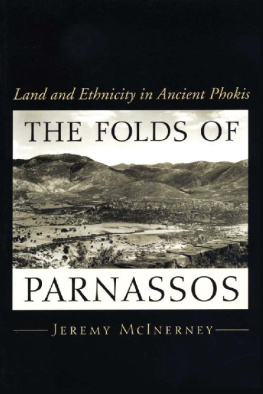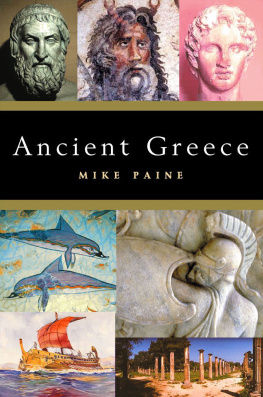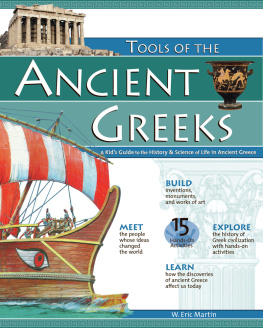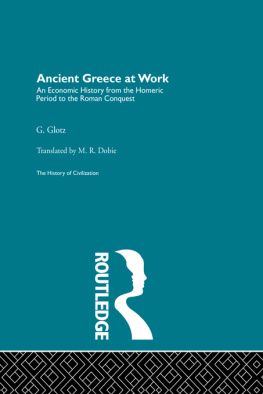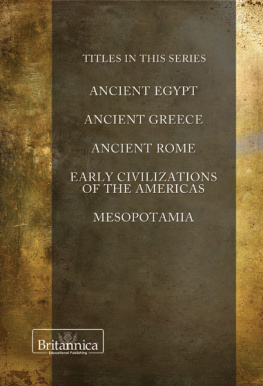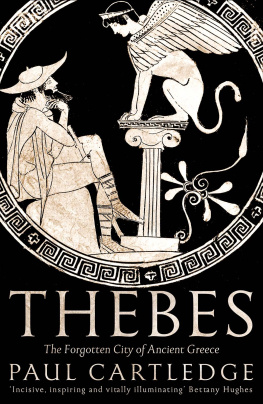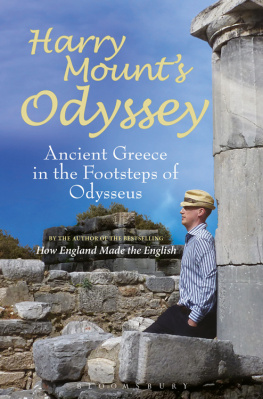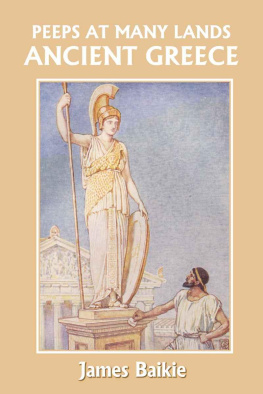THE FOLDS OF PARNASSOS
Land and Ethnicity in Ancient Phokis
Jeremy McInerney

UNIVERSITY OF TEXAS PRESS
AUSTIN
Copyright 1999 by the University of Texas Press
All rights reserved
First edition, 1999
Requests for permission to reproduce material from this work should be sent to Permissions, University of Texas Press, Box 7819, Austin, TX 78713-7819.
LIBRARY OF CONGRESS CATALOGING-IN-PUBLICATION DATA
McInerney, Jeremy, 1958
The folds of Parnassos : land and ethnicity in ancient Phokis / Jeremy McInerney. 1st ed.
p. cm.
Includes bibliographical references and index.
ISBN 978-0-292-75230-6
1. Phkis Region (Greece)Antiquities. 2. Cities and towns, AncientGreeceHistory. 3. GreeceEthnic relations. 4. Land tenureGreecePhkis Region. I. Title.
DF261.P55M35 1999
938.3dc21 99-014597
ISBN 978-0-292-76160-5 (library e-book)
ISBN 978-0-292-78630-1 (individual e-book)
DOI 10.7560/752290
To my parents
CONTENTS
MAPS
PLATES
ACKNOWLEDGMENTS
As the year thus slips away, so the hours of summertime
And images of nature are often lost to mankind.
HLDERLIN (TR. M. KRAMER)
To recapture those lost images, if this is at all possible, requires time, patience, and the support of many good friends. This book began as a dissertation, and I owe more than the usual students debt to my teachers, Erich Gruen, Ron Stroud, Raphael Sealey, and Mark Griffith. They gave unstintingly of their knowledge and advice during the writing of the dissertation. Much of the research for the book was completed while I was a student at the American School of Classical Studies in Athens, and I gratefully acknowledge the School for supporting me as the Wheeler Fellow in 198889, and the Graduate Group in Ancient History and Mediterranean Archaeology at the University of California, Berkeley, for enabling me to return to Greece in 1990 with a Pritchett Fellowship. It is a pleasure to have made a small addition, by this connection, to the long tradition of topographic studies associated with the name of Kendrick Pritchett.
At the school I had the extraordinary good fortune to work with John Camp, who, as Mellon Professor, introduced many of us to the pleasure of studying the Greek countryside. Also, many of my classmates at the school joined me in Phokis, visiting sites and walking the land. I am happy to thank Kathryn Morgan, Gretchen Umholtz, Mike Ierardi, Alison Adams, Keith Dickey, Aileen Ajootian, Jim Sickinger, Leeann Turner, Jennifer Tobin, Liz Langridge, Donald Haggis, Peggy Mook, and Sharon Gerstel. Ann Cuzick and Matt Kramer also shared some of these trips. These and other friends in Athens made studying Greek topography a unique experience.
During the revision of this work, I have further benefited from the support of friends, students, and colleagues in the Department of Classical Studies at the University of Pennsylvania. The department enjoys an atmosphere of warmth and collegiality, and I thank all my colleagues for their support. A grant from the Humanities Research Council of the university made it possible for me to return to Greece in 1994, and since then my research has been supported by the Laura Jan Meyerson Term Professorship in the Humanities. I owe a special debt of gratitude to Professor and Mrs. Meyerson for their generosity. I wish to thank Jenny Sherwood, who produced the maps for this volume, as well as Julia Shear, Kostis Kourelis, and Stephanie Larsen, who checked bibliographical details for me in Athens.
Finally, I wish to thank the members of my family, near and far, in particular my wife, Maud Burnett McInerney, who has endured discussions on every topic from soil deposition to heroic genealogy. By now she may have her own interpretation of the expression Phokian Desperation. My brothers and sisters have provided constant encouragement, but it is to my parents that I owe a debt that can never be adequately repaid. To them this book is dedicated in love and respect.
PREFACE
In antiquity Greek place-names did not remain fixed and unchanging. Literary and epigraphic sources ranging from Homer to the reign of Trajan refer to Phokian towns such as Drymos, Amphikaia, and Phanotos, although they are better known, thanks to the Pausanias, as Drymaia, Amphikleia, and Panopeus. For the sake of consistency and clarity, I have generally followed the toponyms used by Pausanias.
Consistency becomes more of a problem in giving the names of modern sites in Phokis. Many place-names current when Dodwell and Leake traveled through Phokis were replaced in the early twentieth century. Mulki, Velitza, and Glounitza are no longer recognizable toponyms, though they were still in use when Frazer produced his monumental commentary on Pausanias. My practice has been to employ the names now in use, relying on maps of the Hellenic Army Geographic Service, road signs and local usage as a guide. Even so, modern names are still fluctuating thanks to the tangled relationship between classical Greek, Katharevousa, and demotic modern Greek: Modi and Modion, for example, are variations of the same place-name, although neither name is related to the probable ancient name of the site, Triteis. In the case of abandoned sites, reliable toponyms are still rarer. Tithronion, an ancient site whose location has been misplaced in modern topographic literature, sits overlooking the banks of the Kephisos River. Local shepherds confidently report that it was known as Kallithronion, yet that name is unattested in any other source and appears to be a neat blend of Tithronion and the name of the mountain range behind, Mt. Kallidromon.
Because this study treats both ancient and modern landscapes and relies on ancient and modern sources, it has been especially difficult to determine a satisfactory spelling convention. I prefer to use spellings that stay close to the Greek (Herodotos, not Herodotus), but I do not employ this convention when it produces a form much unlike traditionally Anglicized forms (Thucydides, not Thoukydides). Accordingly, I prefer Diodorus Siculus to Diodoros Sikeliotes, and Stephanus of Byzantium to Stephanos of Byzantion. My usual practice has been to cite recondite sources in full, e.g., Benjamin of Tudela Itinerarium. Better-known works I cite in full only for the first reference, and subsequently in abbreviated form, e.g., Hellenica Oxyrhynchia, but later Hell. Oxy. For I have followed, with only a few exceptions, the conventions of Liddell and Scotts Greek-English Lexicon (rev. ed.), The Oxford Classical Dictionary, and LAnne Philologique. All translations are my own unless otherwise noted.
ABBREVIATIONS
AA
Archologischer Anzeiger
AAA
ADelt.
AE
AJA
American Journal of Archaeology
AJP
American Journal of Philology
AntCl
LAntiquit classique
AnzO
Anzeiger der phil.-hist. Klasse der sterreichischen Akademie der Wissenschaften
AR
Archaeological Reports
ARA
Annual Review of Anthropology
Arch. st.
Archologie sterreiches
ASAA
Annuario della Scuola Archeologica di Atene e delle Missioni Italiane in Oriente
ASNP
Annali della Scuola Normale Superiore di Pisa
Ath. Mitt.
Athenische Mitteilungen
AW
The Ancient World
BAR
British Archaeological Reports
BCH
Bulletin de correspondance hellnique
Next page
